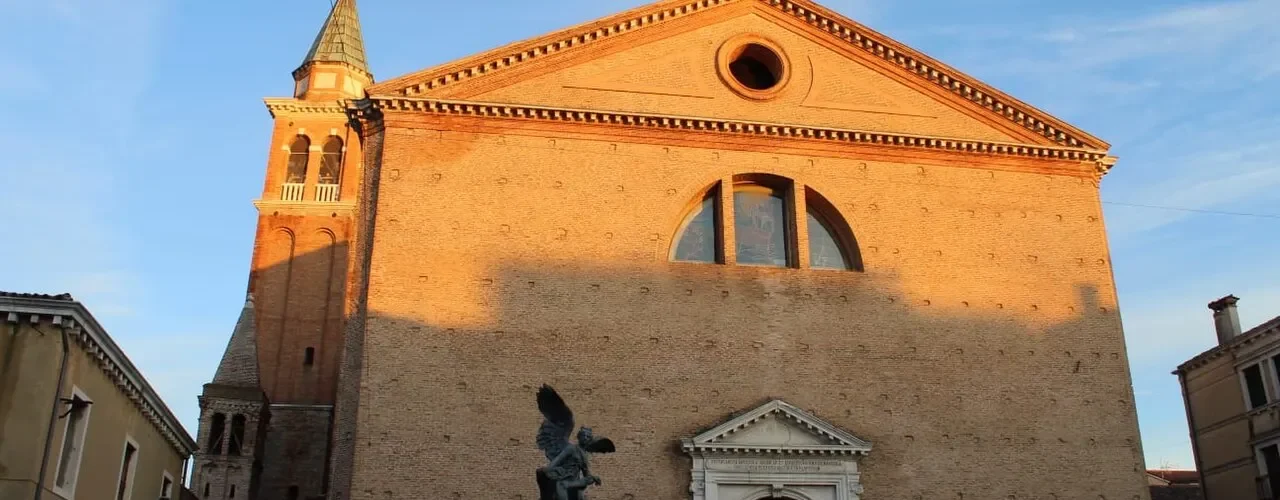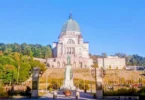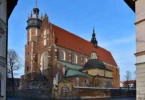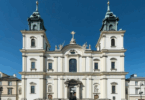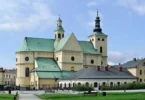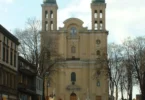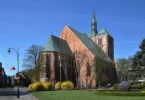Introduction
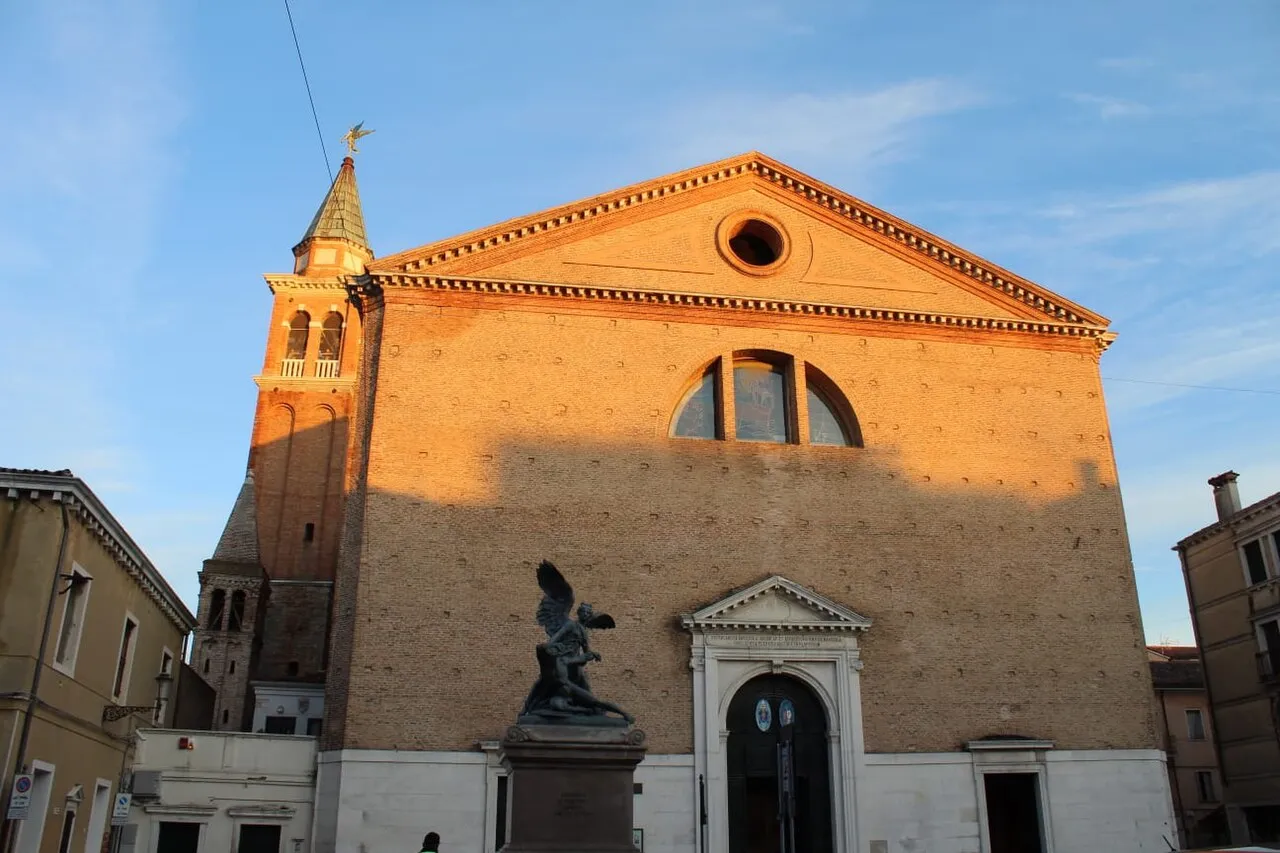
The Minor Basilica of San Giacomo Apostolo is a notable Catholic church located in the historic center of Chioggia, in the province of Venice, Veneto, Italy. Situated prominently in the city’s main square, this religious edifice is the second largest church in Chioggia, following only the Cathedral in size and importance. In 1906, the church was granted the distinguished title of Minor Papal Basilica by Pope Pius X, along with the special designation of Blessed Virgin of the Navicella, recognizing its significant place within the Catholic Church. The basilica’s rich history and architectural beauty make it an important landmark in Chioggia, both as a place of worship and a symbol of the city’s cultural and religious heritage. Its central location in the heart of Chioggia further enhances its status as a focal point for both locals and visitors alike.
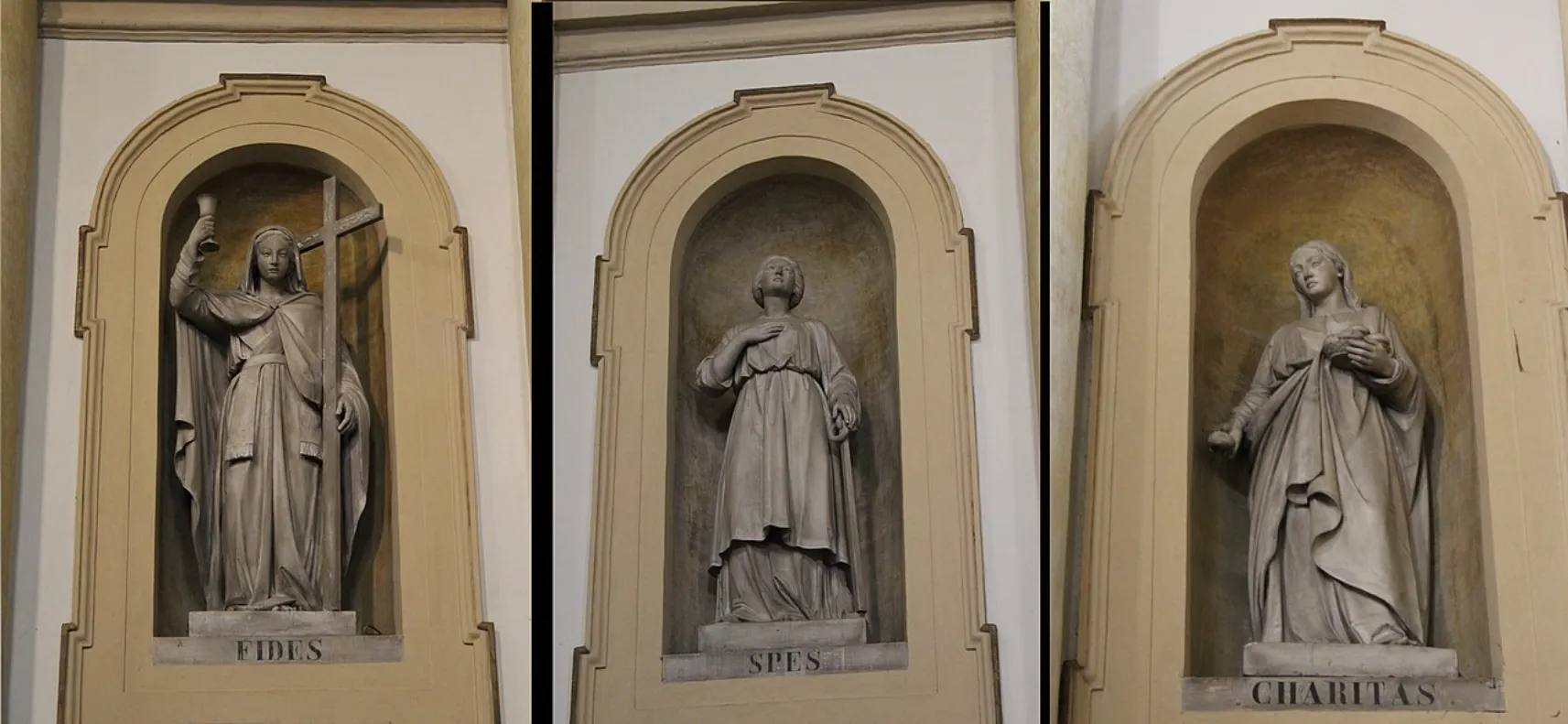
The Early Temple (11th Century)
Before the present church, there was a temple dedicated to San Giacomo, dating back to the 11th century. This early structure, as described by the historian Pietro Morari in his 1637 manuscript “The History of Chioggia”, was austere and modest in design. The temple was divided into three naves by brick columns, which provided a simple yet functional layout for the time. Based on Morari’s description, the architect Aristide Naccari was able to create a graphic reconstruction of the temple’s appearance.
Collapse and Reconstruction (1741-1742)
The original temple of San Giacomo remained standing for centuries until a significant event in 1741. On the night between the 24th and 25th of November, the apse of the church collapsed, signaling the need for a new structure. Following this disaster, the decision was made to build a new church on the same site. In 1742, the Cathedral factory approved the design for the new church, with Venetian architect Pietro Pelle entrusted with the project. Pelle was also involved in the reconstruction of the Church of San Domenico in Chioggia around the same time. However, after Pelle’s death, his nephew, Domenico Pelle, completed the project, bringing the new church to fruition.
The Church’s Role and Financial Independence
While the Church of San Giacomo was a chaplaincy of the Cathedral, it was financially autonomous due to its central location in the city, close to the residences of the upper-class population. Although it fell under the economic jurisdiction of the Cathedral, the church’s proximity to the city’s wealthier residents provided it with the resources to maintain its independence.
The Madonna della Navicella Relics (1806)
On 15 November 1806, an important event took place at the Church of San Giacomo when the relics of the Madonna della Navicella were transferred here. These relics had previously been housed at the sanctuary of the same name in Sottomarina. However, after the sanctuary was transformed into barracks by the Austrian rulers at the end of the 18th century, the relics were moved to the church in Chioggia.
The Coronation of the Madonna della Navicella (1859)
In 1859, the Madonna della Navicella relics were honored in a special ceremony, where they were crowned by the Bishop of Chioggia, Jacopo De Foretti. This event was performed in accordance with a papal bull issued by Pope Pius IX, marking a significant religious occasion for the church and its congregation.
The Church as a Temporary Cathedral (1989-1992)
From 1989 to 1992, the Church of San Giacomo temporarily served as the cathedral of Chioggia during the restoration of the city’s actual cathedral. During this period, the church hosted important episcopal ceremonies and became home to the relics of the patron saints Felice and Fortunato.
Monument to the Fallen
In front of the Church of San Giacomo stands a monument dedicated to the fallen of Chioggia, erected in 1923. This powerful tribute features a bronze sculpture called Winged Victory, created by artist Domenico Trentacoste. The monument serves as a lasting memorial to those who gave their lives in service, capturing both the sacrifice and valor of the fallen in the city’s history.
Architecture of Minor Basilica of St. James the Apostle, Chioggia, Italy
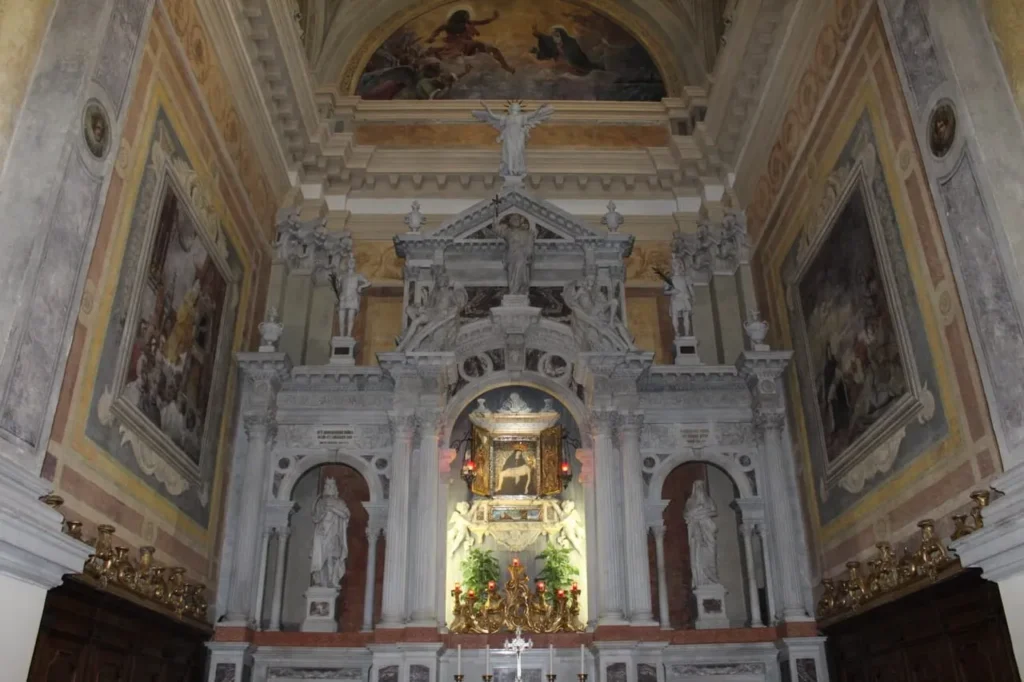
Interior Description of the Church of San Giacomo
The interior of the Church of San Giacomo is an awe-inspiring space that combines architectural grandeur with religious significance. With a rectangular layout measuring 25 meters in width, 35 meters in length, and 25 meters in height, the church offers a vast and harmonious environment for worship. The church is adorned with a series of altars, each one dedicated to a different saint or religious figure, arranged in a counterclockwise direction, guiding the visitor through the sacred space. The Altar of the Guardian Angel is graced by an altarpiece painted by Marinetti, accompanied by a statue of Saint Rita. This altar creates a serene and protective ambiance, with the image of the guardian angel serving as a spiritual guide. The Altar of St. Joseph displays a statue of the saint, flanked by statues of Saints Rita and Lucia. This altar fosters a space of devotion to these beloved saints, with a focus on family, care, and protection.
The Altar of Saints Sebastian and Rocco features an ancient altarpiece depicting the two saints, alongside a panel with the face of the Madonna. This panel originates from a fresco that was once located in the Palazzo Granaio in Chioggia, adding historical depth to the artwork. The Altar with the Baptistery is adorned with a striking statue of Christ by Luigi Tomaz. This altar underscores the sacred importance of baptism, a central sacrament in Christian faith, and its role in the journey of salvation. The Main Altar is one of the most magnificent features of the church. Designed by Aristide Naccari and executed by Pietro Longo in Carrara marble, it frames the relics of the Madonna della Navicella. The altar is further enhanced by protective silver frames crafted by Giovanni Cristofoli, with the design by architect Lodovico Cadorin. Crowning the altar is an angel with open arms, while at the center stands the statue of Saint James. On either side, statues of the city’s patron saints, Felice and Fortunato, are depicted in armor. Additionally, two niches on either side house statues of King David and the prophet Isaiah, adding a layer of Old Testament reverence to the central focus of the altar.
The Altar of the Blessed Sacrament is designed in a neoclassical style, with golden mosaic decorations that reflect its significance in the adoration and worship of the Blessed Sacrament, a central focus of Catholic practice. The Altar of San Giuliano is accompanied by an altarpiece depicting Saint Giuliano, adding another layer of devotion and history to the interior of the church. The Altar of the Souls in Purgatory is adorned with statues of Saint Martha, Saint Mary Magdalene, and Saint Francis of Paola on the left, invoking prayers for the souls in purgatory, a Catholic tradition of intercession for the departed.The Altar of Relics features a Gothic-style reliquary, housing sacred relics that hold significant importance within Catholic devotion. This altar emphasizes the reverence given to relics and the saints, who are believed to intercede on behalf of the faithful.
Near the entrance of the church, there is a large oval canvas (300 x 180 cm) depicting Saint James, painted by Giovanni Carlo Bevilacqua in 1793. This artwork captures the saint in vivid detail and serves as a focal point for those entering the church. Along the side walls, the church features seven niches that house statues of the Theological and Cardinal Virtues. These works, crafted by the sculptor Cameroni, represent the three Theological Virtues—Faith, Hope, and Charity—and the four Cardinal Virtues—Prudence, Justice, Fortitude, and Temperance. These statues add both spiritual and philosophical depth to the church’s interior, underscoring the moral values central to Catholic teaching.Together, these altars, artworks, and religious symbols create an environment that invites deep contemplation and devotion, making the Church of San Giacomo not only a place of worship but also a testament to the rich artistic and religious heritage of the community.
Frescoes of the Church of San Giacomo
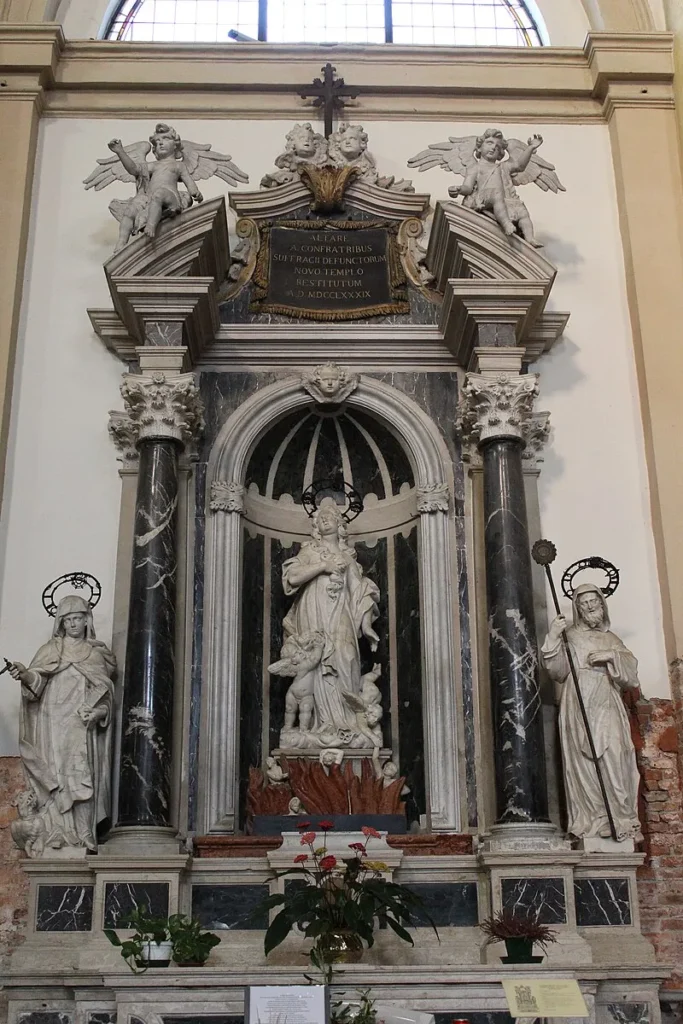
The ceiling of the Church of San Giacomo is graced with a stunning 223-square-meter fresco, illustrating the martyrdom and glorification of Saint James. This grand work was a collaboration between the Mauri brothers, Alessandro and Romualdo from Vicenza, and Antonio Marinetti from Chioggia. The Mauri brothers depicted the moment of Saint James’ martyrdom at the bottom of the fresco, while Marinetti beautifully portrayed the ascension of the saint to Heaven above, creating a dynamic contrast between suffering and divine elevation.
Above the high altar, a lunette fresco features the Blessed Virgin Mary interceding to save the city of Chioggia from divine punishment. To the right of this depiction, the apparition of the Madonna to Baldissera Zalon, which, according to tradition, occurred in 1508, is illustrated. On the left side, the Coronation of the Madonna is portrayed, symbolizing her eternal glory and divine majesty. Additionally, the ceiling of the choir is adorned with five medallions, with God the Father placed at the center, surrounded by images of notable Catholic saints: Saint Benedict, Saint Thomas Aquinas, Saint Alphonsus de’ Liguori, and Saint Francis de Sales. These figures are important icons in Catholic tradition, adding depth and spiritual significance to the church’s interior.
Organ
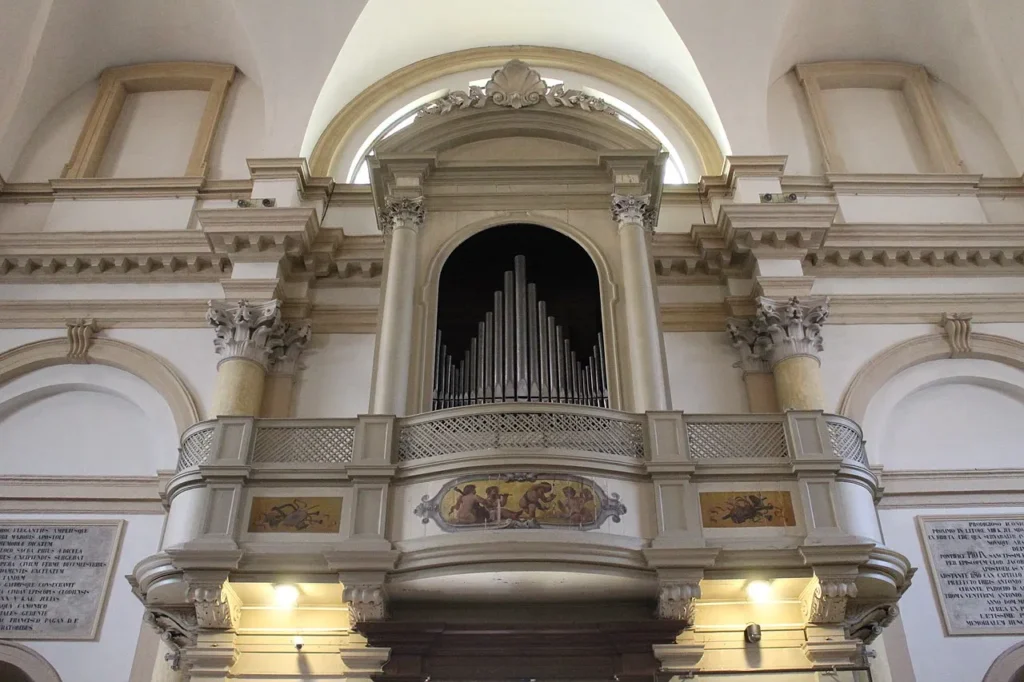
Above the portal on the counter-façade of the church, a mechanical organ installed by Gaetano Callido in 1793 stands as a notable feature. This historic instrument adds a rich auditory element to the church’s liturgical functions.
Ex-Voto
On the northern wall of the church, a large collection of 19th-century ex-votos, locally known as tolèle, is preserved. These painted tablets were commissioned by individuals who had received divine graces, typically after miraculous events. The scenes often depict shipwrecks involving fishermen who invoked the Madonna della Navicella. In the adjacent presbytery, inside glass cases, are older ex-votos dating back to the late 16th or 17th centuries. These relics are embossed on silver sheets and provide a fascinating glimpse into the religious history of the region.
Bell Tower
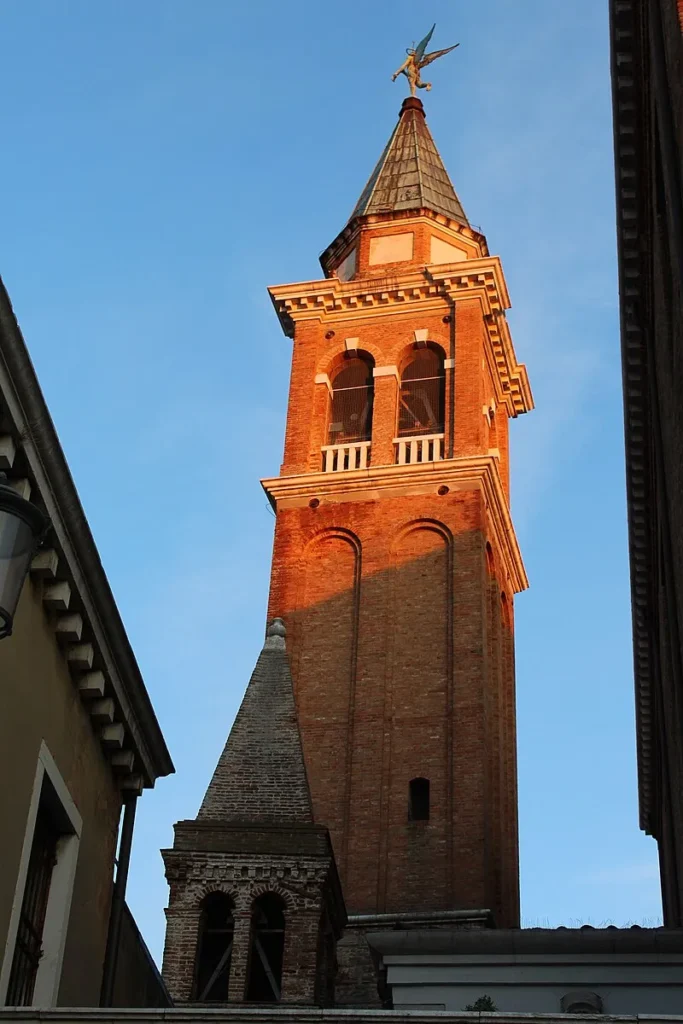
The bell tower of the Church of San Giacomo, designed by Aristide Naccari and built at the end of the 19th century, underwent significant expansion. Originally measuring 18.90 meters, it was later extended to 37.50 meters. A weather vane was added to the top, and the once-low tower was transformed into a towering structure that reaches toward the sky. This new bell tower now eclipses the adjacent bell tower of the oratory of the Battuti della Santissima Trinità, making it an impressive landmark in the city skyline.
Feast Day
Feast Day: 25 July
The feast day of Saint James the Apostle (San Giacomo Apostolo) is celebrated on July 25th in the Catholic Church. This is the feast day for both the Minor Basilica of St. James the Apostle in Chioggia, Italy, and other churches dedicated to him worldwide. Saint James is honored for his role as one of the Twelve Apostles and his martyrdom, and his feast day is marked with various religious events, including liturgies and processions, especially in places with churches bearing his name.
Church Mass Timing
Monday : 6:00 PM
Tuesday : 6:00 PM
Wednesday : 9:00 AM , 6:00 PM
Thursday : 6:00 PM
Friday : 6:00 PM
Saturday : 6:00 PM
Sunday : 8:00 AM , 9:30 AM , 11:00 AM
Church Opening Time:
Monday : 4:00 pm – 10:00 pm
Tuesday : 4:00 pm – 10:00 pm
Wednesday : 4:00 pm – 10:00 pm
Thursday : 4:00 pm – 10:00 pm
Friday : 4:00 pm – 10:00 pm
Saturday : 4:00 pm – 10:00 pm
Sunday : 4:00 pm – 10:00 pm
Contact Info
Address :
Corso del Popolo, 1202, 30015 Chioggia VE, Italy.
Phone : +39 041 400584
Accommodations
Connectivities
Airway
Minor Basilica of St. James the Apostle, Chioggia, Italy, to Venice Marco Polo Arpt (VCE), Viale Galileo Galilei, 30, 30173 Venezia VE, Italy distance between 53 min (57.9 km) via SS 309 Romea.
Railway
Minor Basilica of St. James the Apostle, Chioggia, Italy, to Stazione di Chioggia 30015 Chioggia, VE, Italy distance between 4 min (1.1 km) via Corso del Popolo and Via Granatieri di Sardegna.

